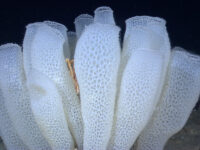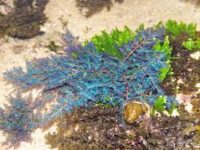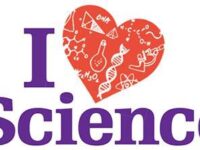Nature has provided endless wonder and inspiration for philosophers and artists since the birth of civilization. Now, increasing numbers of scientists have turned to Mother Nature, not as a source of beauty and contemplation, but to seek her guidance as the most resourceful engineer. In 1997, author Janine Benyus coined the term “biomimicry” to describe sustainable problem-solving and ideation by researching adaptations from nature. Three scientists have channeled a sense of openness and observation of nature’s innovations into breakthrough theories and techniques.
For centuries, it was thought that the origins of life on Earth were slow and incremental — random confluences of amino acids that gradually gave rise to complex lifeforms. A forthright junior researcher argued otherwise. Lynn Margulis settled at Boston University with a biology teaching position while raising her four kids. After 15 rejections, she published the paper “On the Origin of Mitosing Cells,” proposing that organelles in eukaryotes like mitochondria and chloroplasts were once free-living prokaryotic organisms. Now widely accepted as the theory of endosymbiosis, it states that an ancient single-celled ancestor engulfed another, sharing resources and safety within a cellular membrane as a new eukaryotic organism. Margulis credited the basic concept to earlier scientists, however, she unified various historical observations into one contiguous theory. Cooperation is everywhere in nature, from soil bacteria inhabiting rhizomes to oxpeckers ridding giraffes of their ticks, but the idea of two coexisting microbes spawning complex life was radical. She fiercely defended the theory without evidence. Later experimentation in 1978 indicated her theory was the only comprehensive explanation for peculiar phenomena such as chloroplasts and mitochondria hosting their own DNA to produce unique protein machinery. Weathering a decade of criticism and dismissal from peers, a cellular evolution renaissance was born.
One of the most renowned and well-known researchers, Jane Goodall shined a new light onto human nature and behavior by studying great apes. In 1960, she traveled to Tanzania, lacking formal training, and embarked on her groundbreaking work on the Gombe Stream chimpanzee colonies. Instead of treating her chimps as numbered subjects, her research methods were more personable, joining and living with them, yet avoiding anthropomorphizing. She recorded behaviors contrasting decades of convention (such as the idea that only humans wielded tools). In simple and painstaking observation, she identified individual personalities, complex social hierarchy and family dynamics, violent tribal warfare, and — most famously — chimpanzees using a stripped branch to fish termites out of the mound. In response to her revolutionary findings, her mentor Louis Leakey declared, “We must now redefine man, redefine tool, or accept chimpanzees as human!”
Frances Arnold has an atypical scientist’s biography: hitchhiking to protest Vietnam at 17 and motorcycling across Europe. Switching gears from nuclear physics to biochemistry, she delved into designing enzymes and new biosynthetic pathways. Enzymes are complex molecular machines composed of folded proteins composed of amino acids; millions have evolved for varying purposes, from driving DNA replication to digesting cellulose. The standard had been to identify specific DNA fragments, mutate them, and slightly change the enzyme’s shape. She turned to evolution — nature’s best optimizing algorithm. Termed “directed protein evolution,” she takes a protein’s DNA sequence, induces mutations, and generates a library of beneficial mutations creating a mutant with significantly enhanced activity or new function altogether. With only a fraction of protein diversity discovered and the power of controlled selection in the lab, researchers can develop tailored enzymes nonexistent in the wild: synthetic proteins for human-made problems. Directed protein evolution has become a bioengineering stable — applied to producing biofuels, bioplastics, new small protein pharmaceuticals, and metal absorption — earning Arnold the 2018 Nobel Prize in Chemistry.
“They have learned not from books, but in the fields, in the wood, on the riverbank,” Anton Chekhov wrote. “Their teachers have been the birds themselves, when they sang to them, the sun when it left a glow of crimson …”
Nature in its interconnectedness and resilience has shown humanity ancient technologies and tools to better itself. By looking at the world around us from the humble microbe to the entire bustling ecosystems, scientists have profoundly reshaped our perspective on life’s beginnings, human evolution, and a new class of biological tools that can combat today’s most urgent ecological crises. Next time you seek inspiration, go for a stroll outside among the light filtering through trees and paddling mallards, and perhaps a solution may be right in front of you.
Image courtesy of PxHere






